Women and the Puerto Rican Labor Movement
MILAGROS DENIS AND RACHEL POOLEY
In December 1898, at the close of the Spanish-American War, Spain surrendered control of Cuba, Puerto Rico, and Guam to the United States. Though Cuba achieved nominal independence in 1902, in 1917 Puerto Rico assumed the status of an American territory, which afforded Puerto Ricans U.S. citizenship and the right to elect their own legislature, but not the full benefits of statehood. When American forces occupied the island in 1898, the Puerto Rican economy and politics underwent a shift that had implications for labor relations. For instance, the introduction of large-scale agriculture produced opportunities for some women to work as cigar strippers. Indeed, women’s participation in this new economic order gave them the same economic opportunities as men. As changes in the economy took place, women joined their male partners in the struggle to improve working conditions. Thus, women were active participants in and key members of the labor movement from the very beginning. However, as their role in the economy became more prominent, working women became targets of gender and racial discrimination, and their struggle in many instances was interwoven with issues of race, gender, and class. Viewing women solely as workers in the agricultural economy, some industrial managers attempted to limit and control Puerto Rican women’s reproductive choices in order to increase the efficiency of the economic system.
Industrialization and Women in the Workforce
Traditionally, agriculture formed the base of the Puerto Rican economy. Workers from the tobacco and sugar plantations formed gremios, or guilds, which are considered the first attempts at labor organizations. American control brought large corporations and new modes of factory production, which displaced the traditional workshops settings and artisanal apprenticeships. A focus on mass production undermined the quality-oriented mode of production of the artisans.
In 1929, the Wall Street stock market crash precipitated what came to be known as the Great Depression in the United States. Not isolated to the United States, the stock market crash was part and parcel of a worldwide economic downturn. The depression had devastating effects on the island, creating widespread hunger and unemployment that lasted for over a decade. Many banks could not continue to operate. Farmers fell into bankruptcy. As part of his New Deal efforts to restore economic stability, President Roosevelt created the Puerto Rican Reconstruction Administration (PRRA), which provided for agricultural development, public works, and electrification of the island. This improved infrastructure helped to bolster the Puerto Rican economic situation and relieve some of the devastation from the depression.
Adopting the slogan “Bread, Land, and Liberty,” in 1938 the Partido Popular Democrático (Democratic Popular Party) was founded under the leadership of Luis Muñoz Marín. In the insular government, Muñoz Marín had served as a member of the local Congress, as the President of the Puerto Rican senate, and eventually as the first elected Governor of Puerto Rico. In its beginnings the Partido Popular Democrático favored independence for the island. In addition, Muñoz Marín both supported the increased industrialization that American companies were bringing to the Puerto Rico and was an advocate for workers’ rights.
During this increasing industrialization, women took on a more prominent role in the new economy. The demands in the needle industry forced women to leave their homes and work in factories. They worked as seamstresses for low wages. In 1934 Eleanor Roosevelt visited the island and wrote about women’s work in the needle industry in her column “Mrs. Roosevelt’s Page” for the magazine Woman’s Home Companion. Roosevelt also criticized the employment system of those factories. She observed that seamstresses were paid “two dollars a dozen” for making handkerchief that took them “two weeks.”
These types of demands and labor exploitation made women realize that they were as oppressed as men. Thus, it is not surprising that women joined the labor movement along with their male partners as a way to resist economic exploitation.
Organizing
Changes in the Puerto Rican economy altered the relationship between the worker and the economy. The result was that the artisan class developed a more defensive attitude, not only toward industrial capitalism, but also toward the political influences that American companies exercised on the island.
The labor movement in Puerto Rico organized as a political party and adopted socialist ideology to balance the power of U.S. corporate capitalism. In addition, after the United States took control of the island, workers saw an opportunity to join labor organizations such as the American Federation of Labor. Workers’ attempts to combat socioeconomic oppression were facilitated by their socialist critique of the working environment.
Organized workers used newsletters and newspapers as tools of information and empowerment. Headlines and announcements from union newspapers demonstrate that the local labor movement considered women’s issues important. Collectively, this focus on women’s issues allowed female workers from around the island to feel united, and like they had a stake in the labor movement, and the political party that represented them.
It is important to point out here that the union recognized women not only as factory workers, but also as equal partners in the struggle for fair treatment—a struggle that occasionally brought them into conflict with the police. Women strikers, however, did not always behave within the bounds of traditional gender norms. There were instances in which some women strikers “went out of control” and were put in jail.
Reproductive Issues
Though female workers were active participants in the labor movement alongside male workers, primarily women bore the brunt of the coercive and discriminatory reproductive restrictions championed by American industrialists and social workers. From their initial arrival on the island, the Americans were concerned about “public order.” Often this alarm was articulated in terms of a concern about “overpopulation”—the average Puerto Rican family included five to six persons—and a perceived lack of self-control on the part of working class and poor Puerto Ricans.
In 1917, with the support of American industrialists, scientists, social workers, and middle- and upper-class Puerto Ricans influenced by neo-Malthusian arguments supporting widespread birth control, public health officials decided to put into effect a plan to control the birth rate on the island. This policy, though seemingly based on scientific principles, was based on a set of stereotypes about Puerto Ricans that characterized them as racially inferior and unable to make their own decisions about their fertility. It is in this way that the insular government developed public policy to control what they labeled as a “culture of poverty.” In this regard, the fate of the Puerto Rican women was in the hands of American scientists and demographers and local government officials. By distinguishing between superior and inferior persons in their policy of population control, these officials implemented policies based on eugenic assumptions that served the needs of U.S. business interests by disciplining the reproductive habits of their workforce.
Americans’ views about the connection between Puerto Rican racial inferiority and what they saw as an out-of-control birth rate reinforced the assumptions that justified the Americans’ presence on the island. One might agree with Nancy Stepan’s book The Hour of Eugenics, in which she observes that, for an imperial power like the United States, “Eugenics, was more than a set of national programs embedded in national debates; it was also part of international relations.” Thus, the attempt to discipline the reproductive habits of Puerto Rican women was not unusual, since they were colonial subjects and the population policy was part of the colonial experiment.
Operation Bootstrap
In 1948, Puerto Rico elected its first governor. Luis Muñoz Marín had campaigned for economic reforms and structural changes in the political relationship between the Unied States and islanders. Muñoz and other political leaders considered agricultural countries to be underdeveloped and industrial countries developed; manufacturing was seen as the means by which Puerto Rico could develop economically.
As a result, the government launched an industrialization program known as “Operation Bootstrap,” which focused primary on inviting American companies to invest on the island. These companies would receive incentives, such as tax exemptions and infrastructural assistance, in return for providing jobs for the local population. Under “Operation Bootstrap,” the island was to become industrialized by providing labor locally, inviting investment of external capital, importing the raw materials, and exporting the finished products to the United States market.
Due to the nature of the American companies that participated in the plan, women were recruited to work these new jobs, such as those in the garment industry. In these jobs, women often functioned as the main or co-provider in their households and continued to confound the myth of the male breadwinner. Additionally, women continued to participate in the labor movement, protesting for equal wages and better treatment.
During “Operation Bootstrap,” the question of the Puerto Rican birthrate remained a public policy issue. Governor Muñoz feared that the plan for industrial modernization might be in jeopardy if he did not take steps to deal with the “overpopulation” problem. Thus, the administration set about educating the population about birth control, and encouraging surgical sterilization. In other instances, the local government fostered the migration of Puerto Ricans to the U.S. mainland and overseas possessions such as Hawaii. These measures were highly criticized by civil rights groups and the Catholic Church, who perceived this campaign as an unwarranted attempt to restrict individuals’ reproductive rights. In addition, candidates who were challenging the sitting government denounced the discriminatory nature of these public policies.
Governor Muñoz Marin and his cabinet were concerned about the possible electoral repercussions of coercive sterilization policies. Luis A. Ferré, who was Muñoz’s political opponent, alleged that some women were being hired on the condition that they undergo surgical sterilization. Ferré maintained that his allegations were informed by women from one of the factories in the town of Cayey. Muñoz’s advisors suggested that discrimination against women in the work environment on the grounds that they were not sterilized would be a political blow to the Governor’s reelection efforts. As a result, Muñoz ordered a complete investigation, after which he was forced to intervene and reevaluate the role of the government in birth control policies.
Conclusion
Official documents, census data, newspaper articles, and photographs from this time period in Puerto Rico’s history shed light on the complicated roles women have played in Puerto Rican society. American companies and government officials recognized that working women were necessary for increased industrialization. Women’s participation in these new industries opened up the opportunity for them to become household breadwinners and participate in the labor movement alongside men. This participation in industry and in the labor movement, however, also brought with it a slew of government regulations about women’s health, primarily birth control and forced sterilization, often based on eugenic assumptions about the racial inferiority of Puerto Rican women. Thus, it is important to continue to reflect upon the profound ways in which gender influenced the relationship between these workers and the economic system.
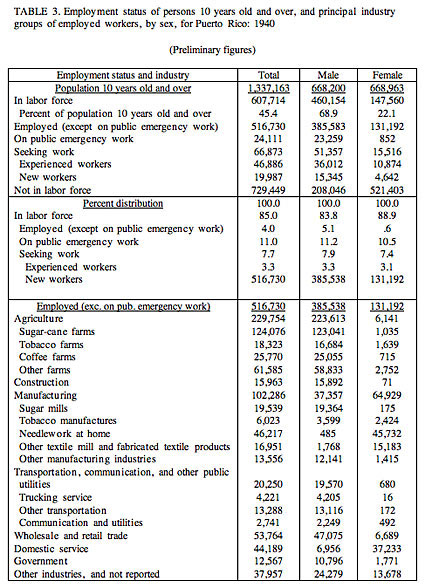
This particular census table describes the types of jobs done by men and women. It illustrates how roles are assigned on a gendered basis. After the Great Depression of 1929, the world economy was in crisis. The United States promoted agriculture to improve the economy and the lives of its citizens. Puerto Rico, as part of the insular possession of the United States, was included in this plan. Thus, an economic plan was implemented to increase the agricultural output of the island. The sugar and tobacco industries became the main source of labor. Men usually worked in the fields while women did other tasks in the factories, such as rolling tobacco leaves.

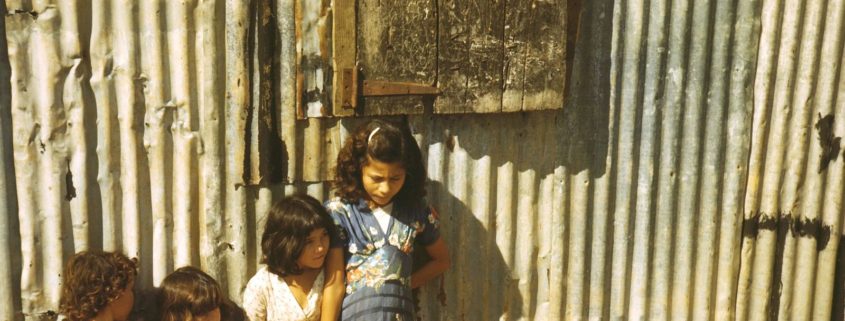
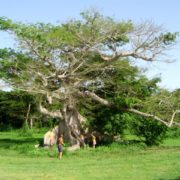
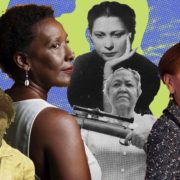
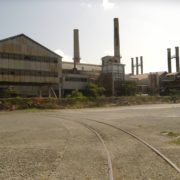
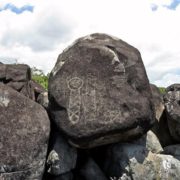

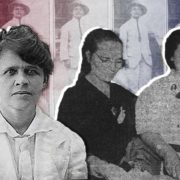
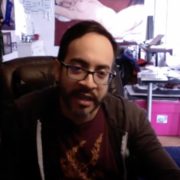
![At work in the cane field, tying bundles of fallen stalks, Porto [sic] Rico Abstract/medium: 1 photographic print on stereo card stereograph. 1923](https://simplybridges.com/wp-content/uploads/2022/06/At_work_in_the_cane_field_tying_bundles_of_fallen_stalks_Porto_sic_Rico_LCCN2003680335-180x180.jpg)


Leave a Reply
Want to join the discussion?Feel free to contribute!